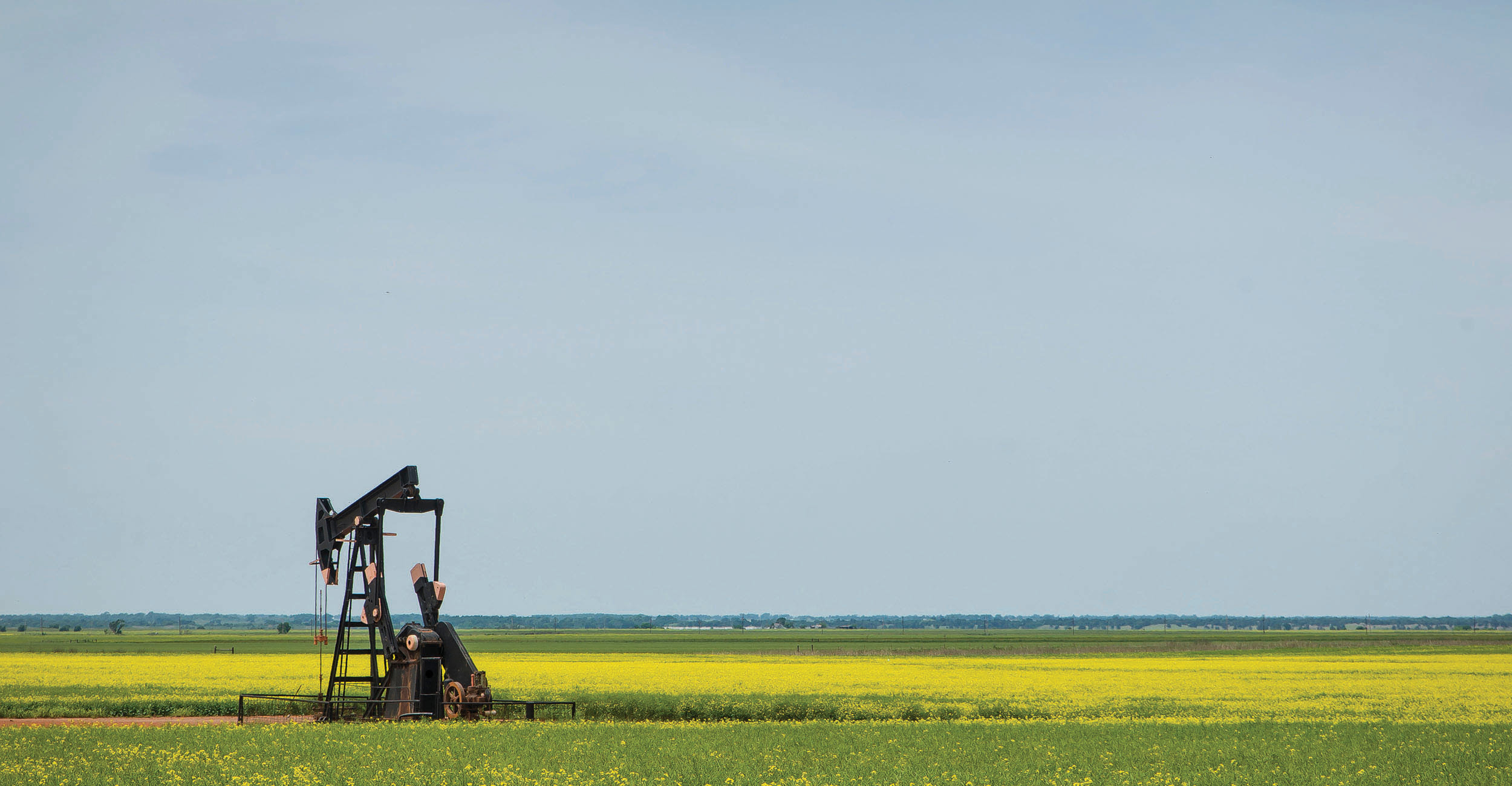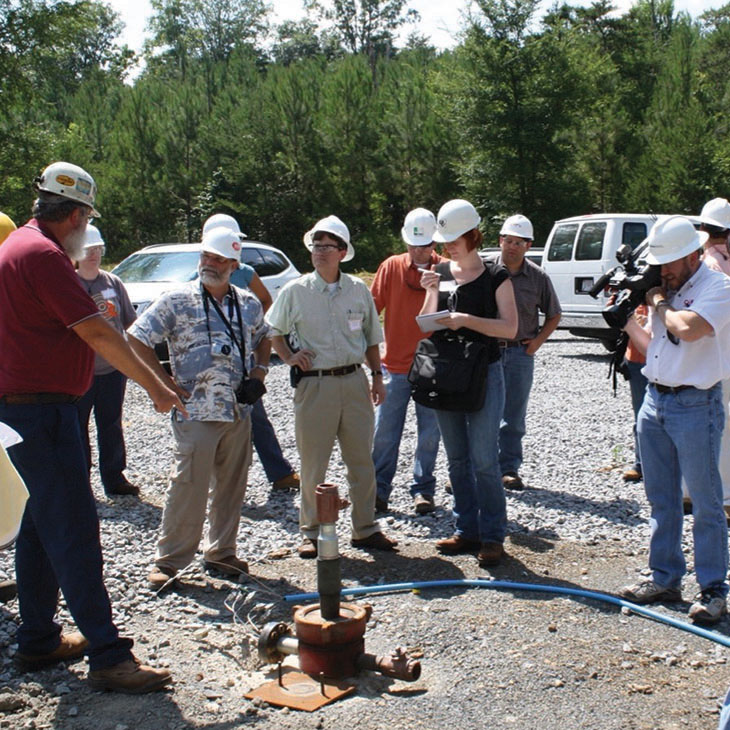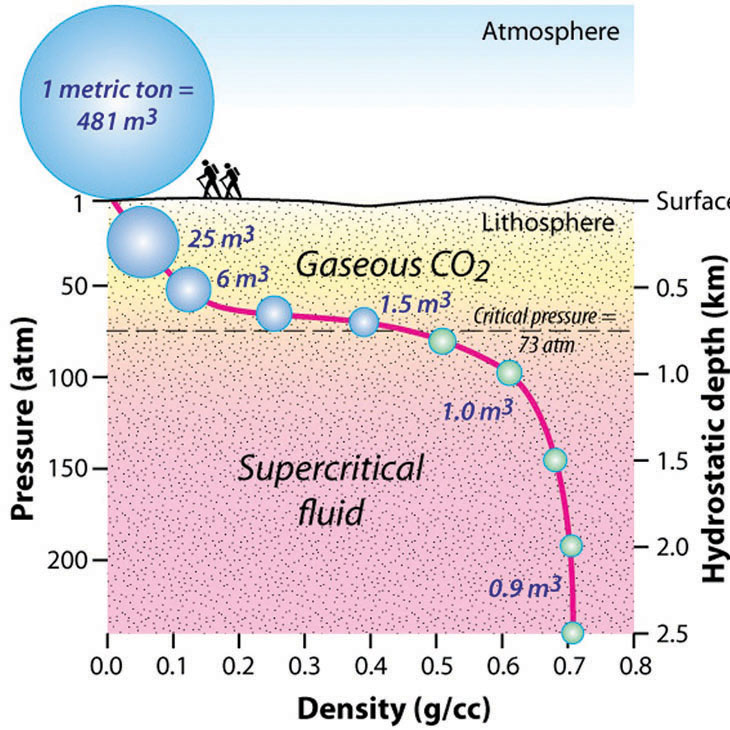
Carbon storage a key part of OSU geology research
Friday, October 21, 2022
Media Contact: Harrison Hill | Senior Research Communications Specialist | 405-744-5827 | harrison.c.hill@okstate.edu
With a push to reduce emissions — especially carbon dioxide, a powerful heat-trapping gas — a group of researchers at Oklahoma State University and across the nation are looking at how CO2 could be captured and stored almost indefinitely, eliminating its impact on the environment.
That is exactly what Dr. Jack C. Pashin is focused on. An OSU professor and Devon Chair of Basin Research, he is on the forefront of carbon capture, utilization and storage (CCUS) research.
A greener future
One of Pashin’s main goals is looking at how to find and categorize areas underground that would be good storage spots for CO2 — usually, these come in the form of old natural gas sites or empty oil reservoirs, he said.

The process works because as CO2 is pumped underground, it is compressed by high pressures and is trapped in the space between rocks where the natural gas or oil is.
“The overarching goal is to reduce greenhouse gas emissions,” Pashin said.
Those emissions are becoming a growing issue. Measured in parts per million (PPM), many scientists believe exceeding 430 PPM of CO2 would be detrimental to the planet, and that number is approaching.
“It was October 2013 when the CO2 concentration in the atmosphere exceeded 400 PPM,” said Dr. Camelia Knapp, department head in the Boone Pickens School of Geology. “That was kind of an extra eye opener.”
That doesn’t necessarily mean that fossil fuels have to go away.
“Overall, 84% of the world’s energy consumption comes from fossil fuels,” Knapp said. “You can’t really shut down that route, you know, and say, ‘We are going to use wind and solar and geothermal’ when we just don’t have those infrastructures in place to accommodate the demand.”
So the focus is instead on capturing the CO2 produced from burning fossil fuels and finding good areas underground where it can be stored.
“You can apply it to any number of things — this carbon capture method — the original goal was to apply it to coal-fired power plants,” Pashin said. “Because that was the biggest emission source outside of the transportation sector. Other big sources include gas-fired power plants, refineries, cement plants and fertilizer plants. And there you can capture all of the CO2 you want, if you get any, you are going to get it all.”
Once it is captured, it could then be locked away underground.
“The Department of Energy’s goal on all of our projects is to ensure 99% storage security over 1,000 years,” Pashin said. “And that’s actually a very low bar, because we look at the oil and gas reservoirs and these formations trap these gases over geologic time — a lot more than 100 million years. So the seals are that good in the right spots.”
Finding the 'Saran Wrap'
Finding the right spots is where Pashin’s main research comes in.
“Not everywhere is a good place to do this geologically,” he said. “So the key is finding the best spots. And once we find those spots, we have to really characterize all the details of what’s there.

“We also have to know if we inject some CO2 how it’s going to behave. Is it going to migrate? Where is it going to migrate? Can we control it? Is it going to stay in the area where we have the right to do it — where we have access?”
The other key part is monitoring it over time, Pashin said.
“When we inject a large volume of fluid, we increase the pressure in the subsurface, and we want to be able to detect that fluid,” he said. “And generally, we consider if there is a leak, it’s too late, you want to get everything before there’s a leak.”
His team has all kinds of technologies they use to do that.
“To me, one of the most valuable things is what’s called an observation well where you drill a well into your injection zone, some distance from where you’re injecting, and you monitor the pressure and sample fluids,” Pashin said.
The wells are filled with all kinds of sampling tubes as well as pressure and temperature transducers, Pashin said. So what makes a good spot for storing CO2? Often the areas where oil and natural gas once were can now be used to offset their carbon impact.
“A good spot would have a lot of pore space; that is, a lot of open space in the rocks,” Pashin said. “It has to have good permeability. And the other thing you need is a really good seal — something that effectively acts like Saran wrap that keeps the CO2 underground.”
The best materials are things like salt, shale or anhydrite, Pashin said.
“Those are just like Saran wrap,” he said. “We also want to know that there are no breaks, no fractures, or anything running through them. So the leakage is minimal, if not non-existent.”
The other benefit of storing CO2 in oil fields is it can also be used to extract more oil and natural gas, Pashin said. That offsets the cost — one of the main issues with capturing carbon.
“The CO2 dissolves in oil and makes the oil lighter and much more mobile,” Pashin said.
Generally, you get about 15% of the oil that’s in the ground when you just pump it out, he said.
“And then most fields, after a few years, go into what’s called water flood, where they inject water into the reservoir, and you generally get another 15% of the oil out of that,” Pashin said.
If you inject CO2 next, you get an additional 15%, he said. That is a big driver for storing carbon this way, he added.
“When you’re doing this at an oil reservoir, what you end up doing is you inject the CO2 and some of it stays in the ground, but part of it comes back up with more oil, because that’s what’s moving the oil,” Pashin said. “And then you recycle that CO2 and it goes back underground — it is a closed loop.”
Once the well is dry, the CO2 stays stored in the ground instead of being emitted into the atmosphere, Pashin said.
From the beginning
Pashin has studied carbon capture and storage since the early days in 1997. Pashin was working at the Geological Survey of Alabama when his project manager, Charlie Buyer, grabbed him and told him he had a life-changing idea.
“He started talking about it, and I’m sitting there thinking, ‘Whoa, this is really different.’ And then by the end of the conversation, ‘Yeah, I’ll probably be spending the rest of my career doing this,’” Pashin said. “A lot of my experience has been on the geological side of things in terms of figuring out where the opportunities are to store CO2 safely in the subsurface. But also doing a lot of testing and things like that.”
One of Pashin’s areas of expertise is coal bed methane — natural gas that is extracted from coal underground — which also provides a large area for carbon storage.
“When I started this, nobody knew what they were doing. And the big thing for CO2
storage is the scale of it,” he said. “To go to a low emission system, you would have
to double the pipeline infrastructure in the U.S., which is doable.”
Pashin is not alone in his work at OSU, though.
“I think we have a strong research presence in carbon capture, utilization and storage here in the geology school at OSU in particular,” Knapp said.
But there is also a focus on carbon capture and storage across the university, she added. From engineering researchers in the College of Engineering, Architecture and Technology to business professors conducting data analytics in the Spears School of Business — many faculty are focused on carbon capture and use, she said.
Pashin is also involved with the Southeastern Carbon Sequestration Partnership, which has been going on since 2004.
“It is a lot of organizations, universities, state geological surveys, utilities, consultants, you name it,” Pashin said. “And it’s essentially a program to develop the storage technology and implement it.”
The team at OSU hopes the research will grow and see an increase in federal funding, Knapp said. She hopes to see a growing awareness of what carbon capture and storage is among the public.
“People just think that buying electric cars is going to solve climate change,” she said. “Where does that energy that charges the batteries come from? It’s mostly fossil fuels.
“I think it is all based on education in communities. And we do a lot on our side but the path forward has to come from policymakers and their constituents.”
Photos By: Todd Johnson and Jack Pashin
Story By: Harrison Hill | Research Matters Magazine
